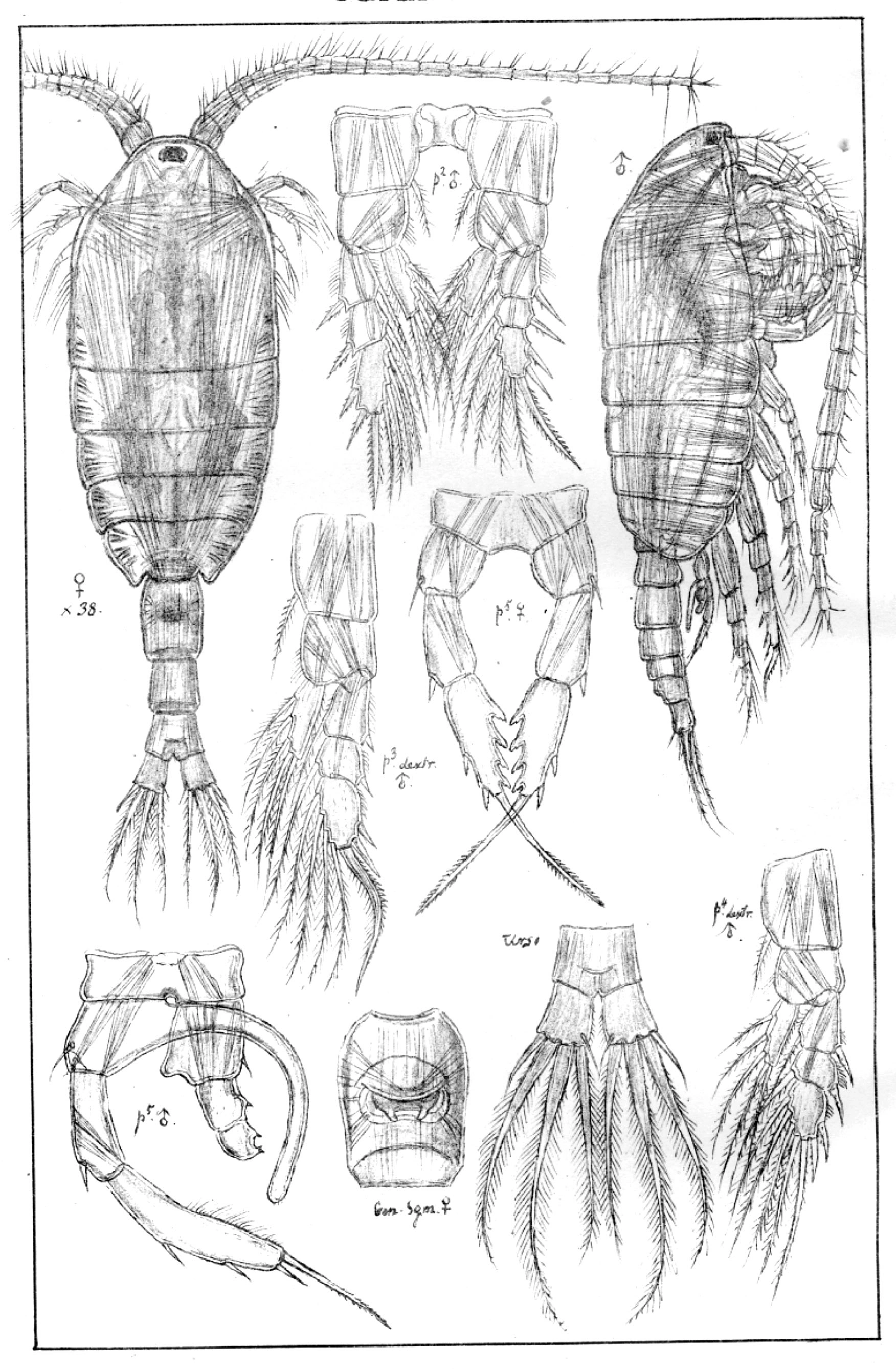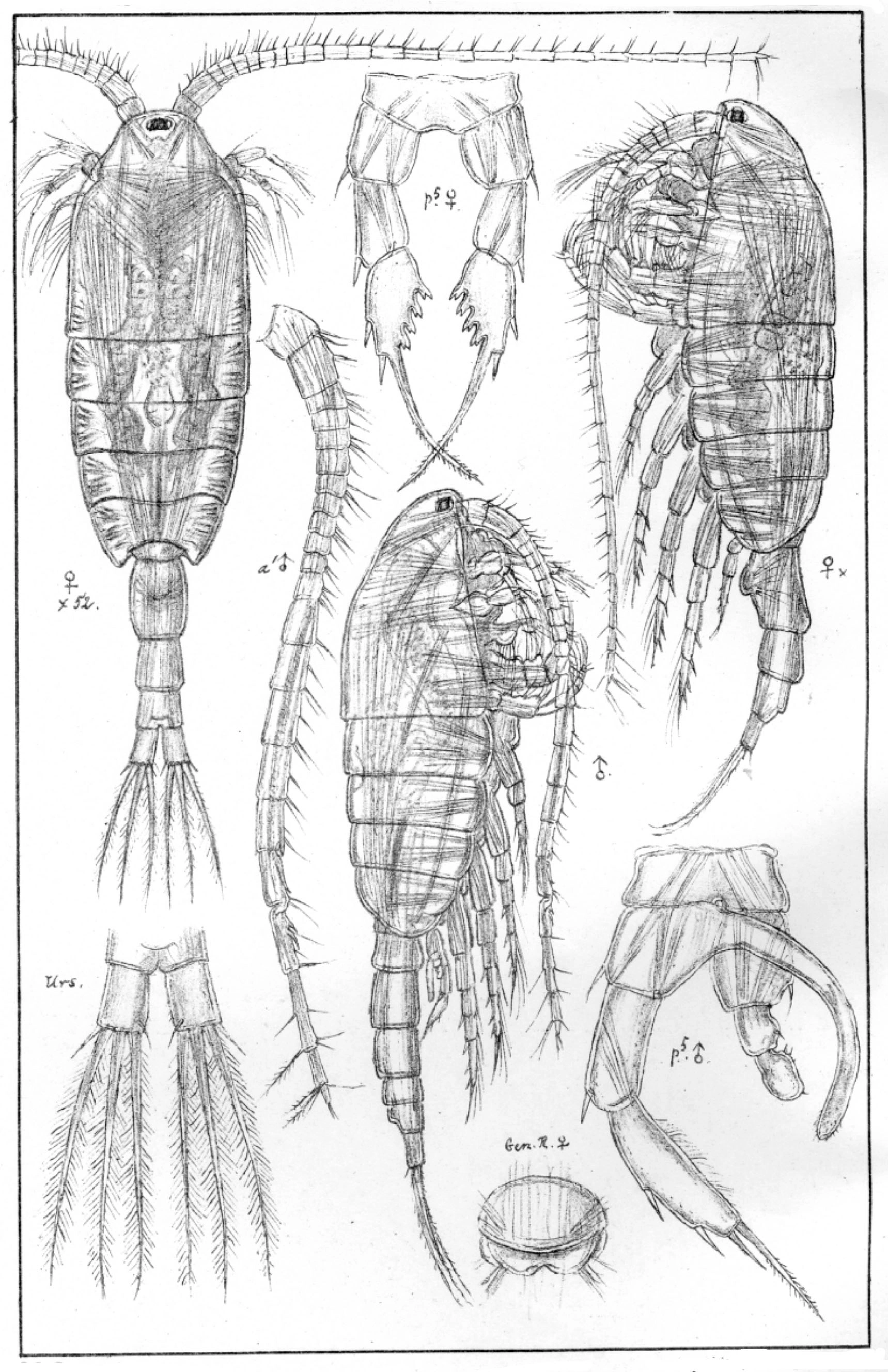Heterocope borealis
Heterocope borealis is an extremely robust calanoid copepod having a dark olivaceus colour, and where the anterior antennae and tail are tinged with reddish brown. It is only found in a limited number of localities in the north.
Key characteristics
Heterocope borealis (female)
Heterocope borealis appears even more robust than H. saliens. Adult females are easily distinguished from H. appendiculata because of the group of appendages in front of the genital orifice. H. borealis has two projections on each side of the genital area, which can be used to separate it from H. saliens. Further, the antennaes are slightly shorter compared to the other two species, reaching somewhat beyond the genital segment. Its colour is of a dark olivaceus hue, while the anterior antennae and tail are tinged with reddish brown.
Female: Length 2.5–3.0 mm
Male: Length 2.5–3.0 mm
Ecology and distribution
G.O. Sars found this species in small tarns and ditches in the eastern part of Finnmark county. Today there is a limited number of records of H. borealis and except for two large lakes in Nordland county, all are from Finnmark county. The latter are from water bodies that have a surface <10 ha and are situated below 300 m a.s.l. pH varies between 4.9 and 7.0 while conductivity varies between 2.1 and 6.4 mS/m.
| Vitenskapelig navn | < 4,5 | 4,5 - 4,9 | 5,0 - 5,4 | 5,5 - 5,9 | 6,0 - 6,4 | 6,5 - 7,0 | 7,0 - 7,4 | > 7,5 |
|---|---|---|---|---|---|---|---|---|
| 0 | 0,4 | 0 | 1,2 | 0,9 | 0,6 | 1,1 | 0 |
| Vitenskapelig navn | < 1,0 | 1,0 - 1,4 | 1,5 - 1,9 | 2,0 - 2,9 | 3,0 - 3,9 | 4,0 - 4,9 | 5,0 - 6,9 | 7,0 - 9,9 | > 10,0 |
|---|---|---|---|---|---|---|---|---|---|
| 0 | 0 | 0 | 1,3 | 1,7 | 0,6 | 1,8 | 0 | 0 |
| Vitenskapelig navn | < 0,01 | 0,01 - 0,09 | 0,1 - 0,9 | 1,0 - 9,9 | 10,0 - 99 | 100 - 999 | > 1000 |
|---|---|---|---|---|---|---|---|
| 0 | 2 | 0,5 | 1,1 | 0,9 | 0,5 | 0 |
| Vitenskapelig navn | < 100 | 100-299 | 300-499 | 500-699 | 700-999 | >1000 |
|---|---|---|---|---|---|---|
| 2 | 0,9 | 0 | 0 | 0 | 0 |
Look alikes
Heterocope saliens

